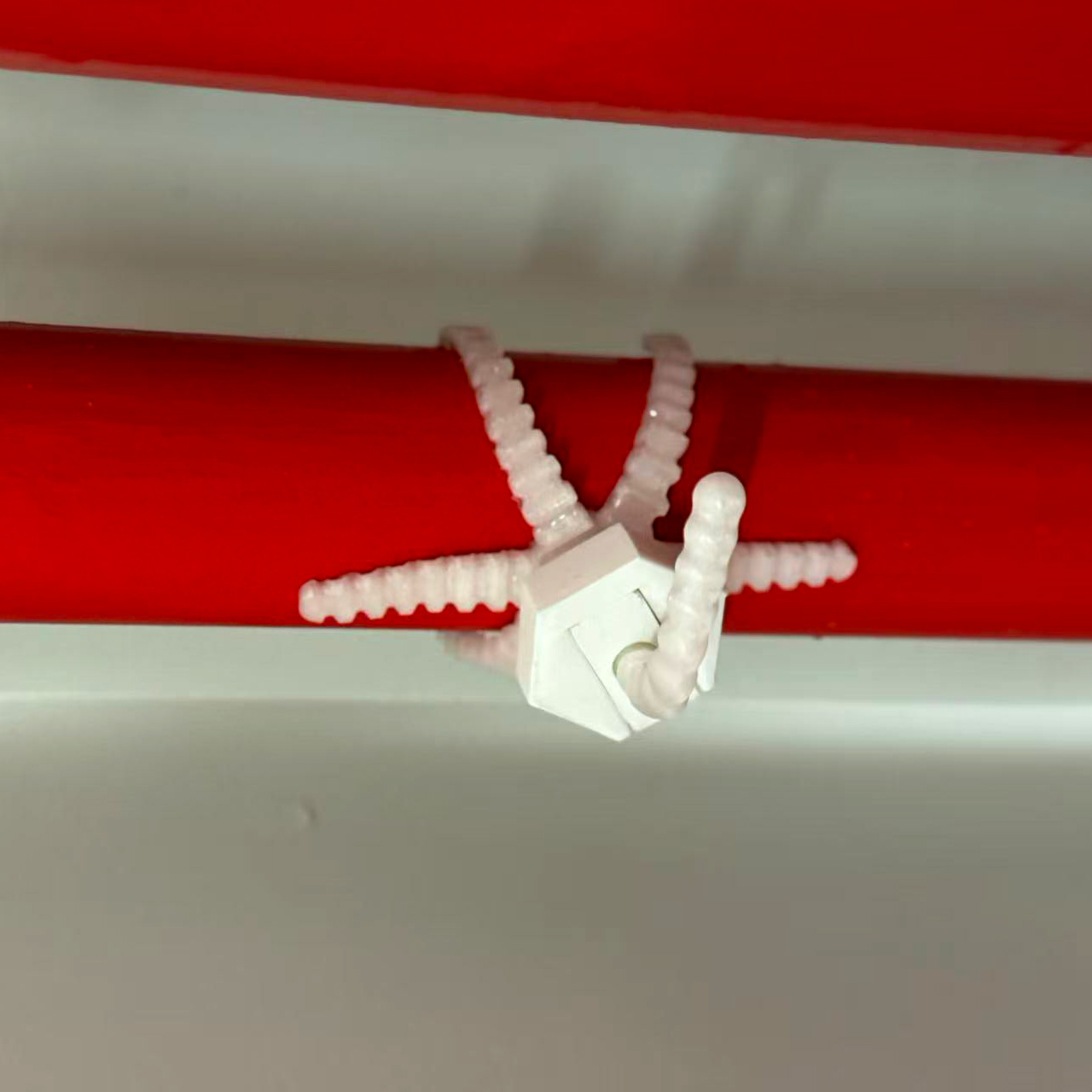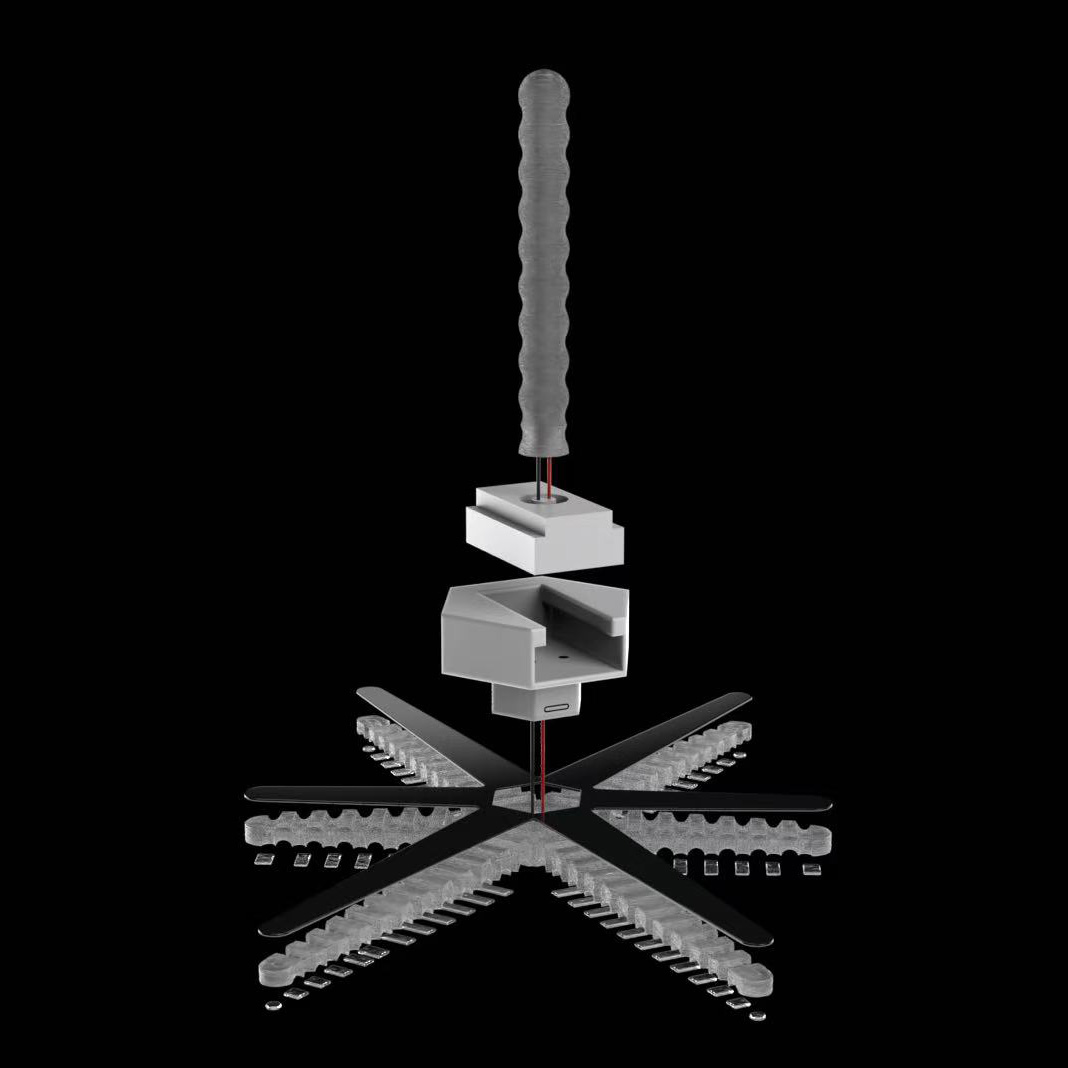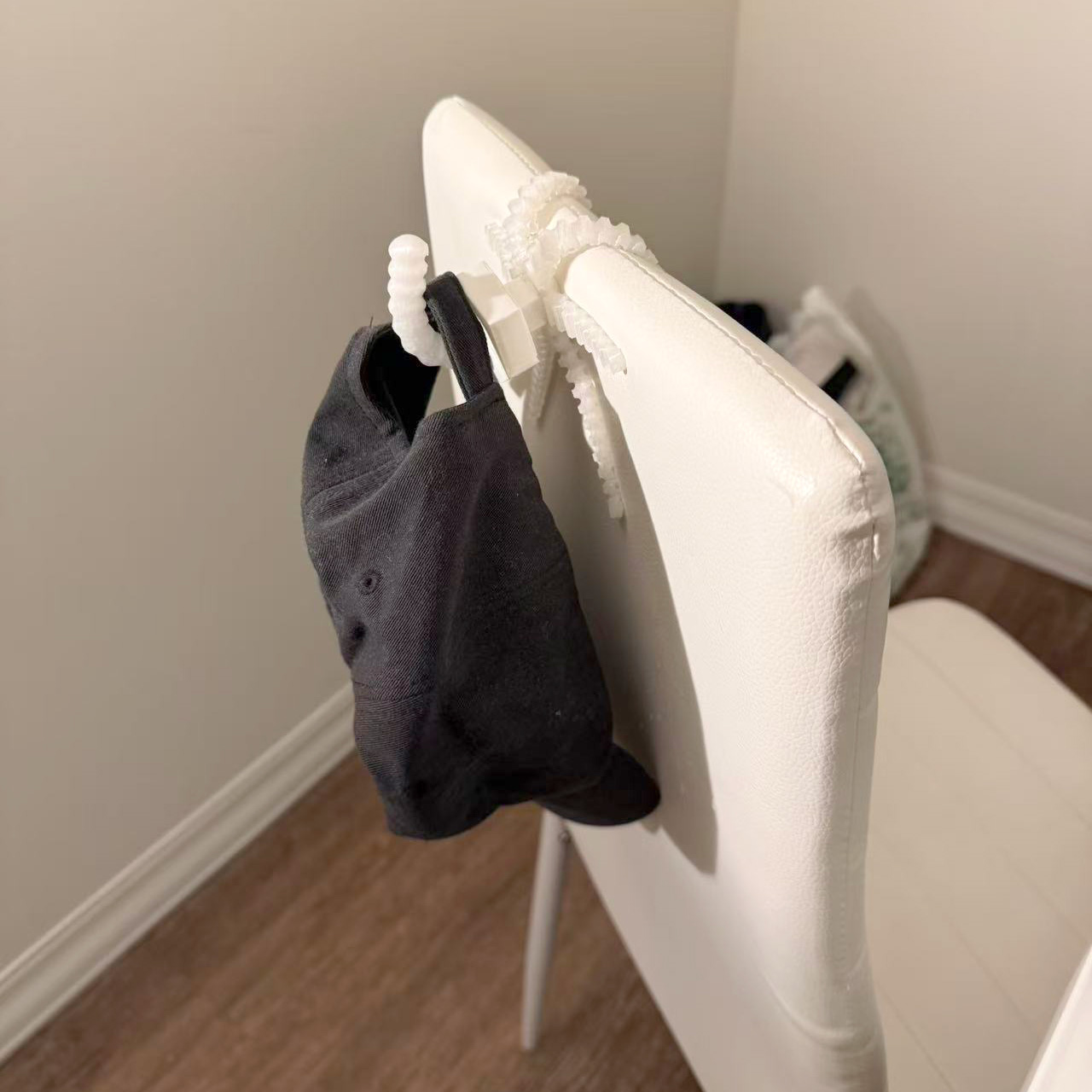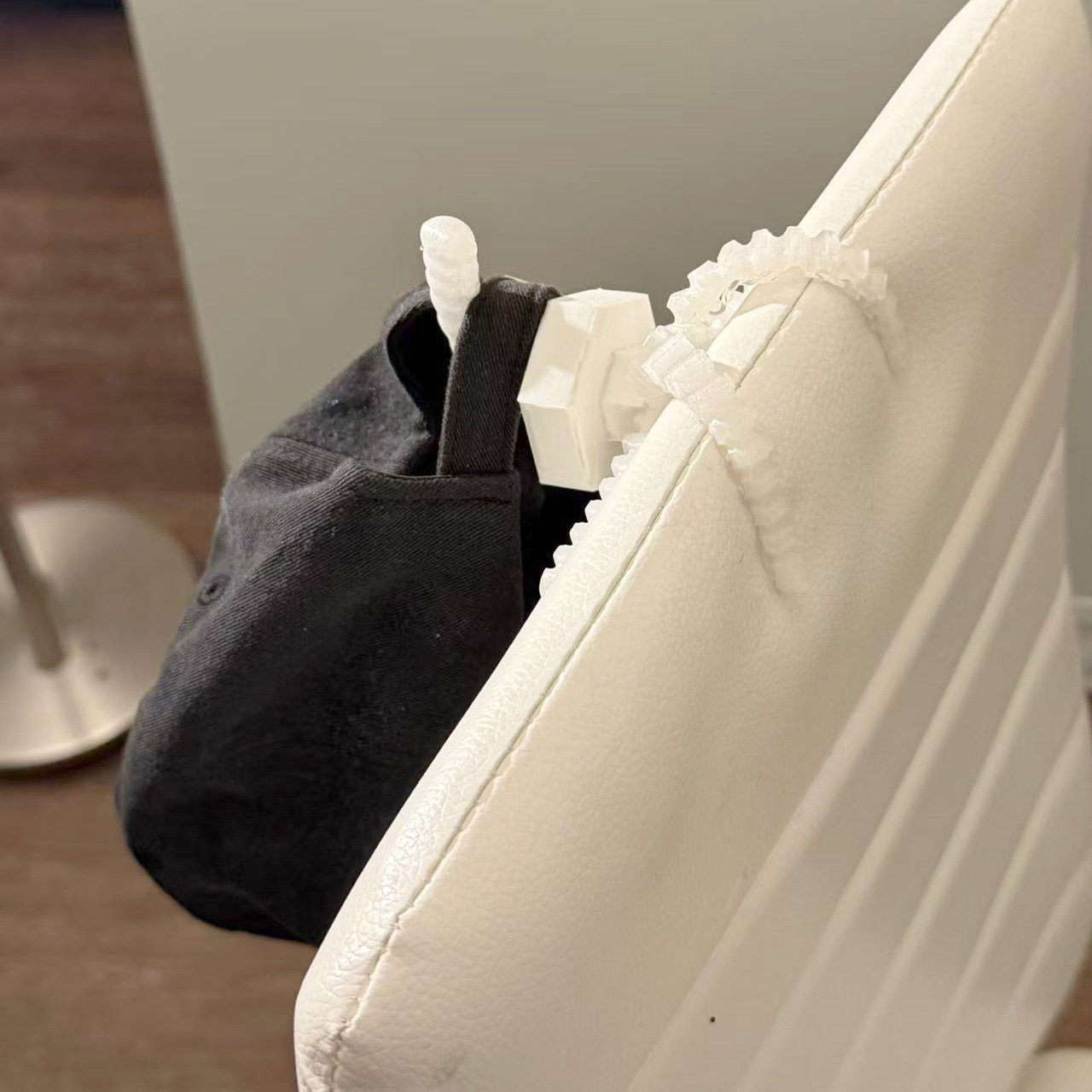SMP Multifunctional Hook
Creator: Zejun (Jeff) Wang
Supervisor: Peter Yeadon
This project focuses on the design of a multifunctional hook made of Shape Memory Polymer (SMP) smart materials that are thermoresponsive. The main idea is to create a reusable attachment device that can grip onto many kinds of surfaces and objects without drilling, adhesives, or permanent hardware. By applying heat, the SMP arms become soft and deformable, allowing it to be shaped onto a surface/object. As the SMP arms cool down, the arms harden and the hook is ready to use. However, later, the arms can be reheated in order to have them return to their original shape, and to be used again.
The hook would be built with SMP claws that include embedded heating wires for even warming and softening. To ensure comfort and safety, a rubber insulation layer would block heat from the inner parts, and additional design elements would support both function and safety: copper contact points for steady electrical connection, a temperature control chip to avoid overheating, a USB Type-C port for easy charging, and a thermochromic coating that shows when the material has cooled and is safe to handle. A hook adapter allows users to swap between different hook sizes, making the product more versatile.
Several prototypes were tested to find the best structure. The six-claw gripping structure proved the most effective. Early versions showed gaps when holding thinner objects, but later iterations reduced the central area, and added grooves for flexibility. A medium hook (1.5 inches long, 0.4 inches in diameter) was tested with loads up to 2 kg. At the weight limit, deformation appeared, but the hook did not detach even after two hours. Recovery tests confirmed that the claws could reliably return to their original form after heating and cooling cycles.
The SMP Multifunctional Hook’s smart materials enable the product to be adaptable, reusable, and safe. Its ability to attach to edges, rods, and irregular objects makes it different from conventional hooks or clamps. Because it avoids permanent installation and surface damage, it also offers a more sustainable alternative. The design could be improved by optimizing energy efficiency and exploring modular extensions for specific uses, such as travel or outdoor activities. There is also potential to integrate sensors for monitoring loads or usage cycles.




Previous Next
Back︎︎︎

